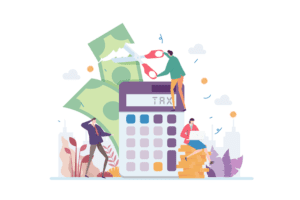
This approach provides a granular, data-driven forecast that takes into account the likelihood of individual deals closing. Sales forecasting is a critical aspect of strategic planning and revenue management, but there’s no universal solution. The ‘one size fits all’ approach simply doesn’t apply to sales forecasting methods. Without accurate sales forecasts, your marketing efforts will find it more difficult to align with customer demand and your future revenue will always be something of a recurring monthly surprise. Connecting with these other tools enables your sales forecasting software to access real-time data, improving the accuracy of your predictions. We’re not sure how to quantify “superhuman accuracy.” What we do know is that Gong is a solid sales forecasting software that will definitely help you predict future sales performance.

Uncertain industry environment

The effectiveness of your sales forecasting process depends largely on aligning the method you use with your specific sales model. Each sales environment—whether transactional, enterprise, or hybrid—requires a different organizations usually use only one method for forecasting sales. approach to generate accurate forecasts. Choosing the right sales forecasting method helps you leverage your historical sales data, sales motion, and team dynamics for optimal forecast accuracy. Historical sales data forecasting is one of the most straightforward and widely used sales forecasting methods. It relies on analyzing past sales data to identify trends, seasonality, and patterns that can be used to predict future sales.
Step 1: Formalize the Forecasting Process
- You can adjust your forecast based on changing market conditions, customer preferences, or other factors that may impact sales.
- In the financial services industry, accurate sales forecasting is crucial for managing cash flow and making informed business decisions.
- Research shows that accurate sales forecasting is highly indicative of business success, as companies boasting accurate sales forecasts are 10% more likely to grow their revenue year-over.
- If you’re a brand-new business, you simply won’t have the foundational data needed for any forecasting method that relies on a wide breadth of past information.
For that reason, intuitive sales forecasting is typically most effective when combined with data-driven techniques to validate and refine the double declining balance depreciation method predicted outcomes. Lead value sales forecasting considers the potential value of each lead in dollar terms. By considering criteria like lead source, demographic fit, and buyer intent, you can assign a monetary value to every lead in your pipeline.
What is the best sales forecasting software?
- It allows sales teams to consider the full potential of each account, including upsells, renewals, and cross-sells, providing a more holistic and strategic forecast.
- That said, a sales forecasting model that’s almost entirely reliant on cognitive input invites the potential for human error.
- There are many different techniques for creating a sales forecast, but the right one for you depends on what you’re trying to achieve and why.
- Your sales forecasting tool should allow you to forecast sales for specific products or services in addition to your overall business.
- Businesses can use Excel to create custom forecasts that meet their specific needs.
- Some reps may be overly optimistic with their account outlook while others may be underestimating their sales out of caution.
With accurate sales forecasts, you can identify issues with your sales strategy or overall performance before they become bigger problems. But there isn’t one bulletproof method of predicting sales that will work for all companies. Instead, there are several that can work for coming up with good sales forecast estimates and help your marketing team create strategies based on those sales outcomes.
- It might also help to aggregate data or combine techniques for greater accuracy, and think of forecasting as a guide and not the ultimate determinant for decisions.
- As a result, businesses should see improved lead qualification, better alignment between sales and marketing, and more accurate forecasts.
- You can also engage with the marketing team to understand upcoming campaigns, promotions, and strategies that may influence customer demand.
- Historical models can also help with how to forecast sales in other sectors where detailed data on customer behaviours or external variables isn’t readily available.
- When built thoughtfully, your sales forecasting process becomes a tool for driving alignment, improving sales team performance, and supporting proactive decision-making across your entire organization.
- If one component is out of place, you could face a few forecasting challenges, even if you have the best sales forecasting software on the market.
- Pipedrive offers five different plans, though only three of them include sales forecasting features.

However, newly emerging businesses must choose qualitative methods to make up for the lack of data. Established businesses can rely on historical data to build their projections. However, it’s important to assess the quality and availability of extensive to ensure it’s beneficial for your business. payroll It’s important you choose the right forecasting method that can help you achieve your strategic goals. This algorithm analyzes previous sales data from each lead source to predict the future.

What are the core sales forecasting models?
- Forecastio uses AI sales forecasting to analyze pipeline health, deal risk, and sales cycle length automatically.
- Techniques such as linear regression and time-series analysis are commonly used in quantitative forecasting to identify trends and make accurate predictions.
- Even the most advanced sales forecasting software or automated forecasting tools need a solid process behind them.
- An example of a regression model is linear regression, which represents a linear relationship between a forecast variable and a predictor variable.
- Different methods deliver different results depending on your team, sales cycle, and market.
Only through using sales forecasting techniques can your business prepare for what’s to come. The brand that moves in the right direction first is the brand that defines itself as an industry leader. Before discussing specific types of sales forecasting, let’s break down modern sales forecast methods into three distinct categories. Understanding these categories empowers you to choose the techniques that align with your business goals.
Deixe um comentário